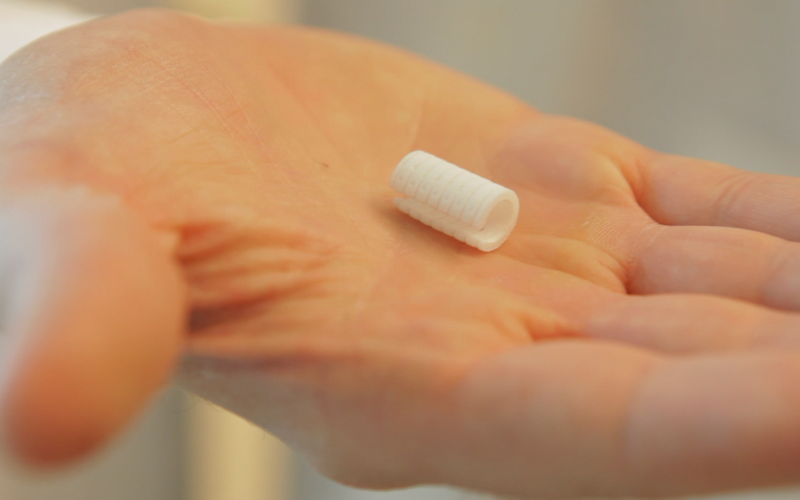The method of three-dimensional printing, which conjures up solid objects from 3D computer models, is beginning to make a larger impact on the world of life science technology. Though 3D printing was developed almost thirty years ago, its use in conjunction with biology began fairly recently but is quickly increasing. In fact, bioscientists from the University of Michigan, Ann Arbor just used 3D printing to save the life of a baby.
The baby in question was Kaiba Gionfriddo, who had a collapsed bronchus. This blocked the airflow to his lungs to the point where he stopped breathing on a daily basis and had to be resuscitated. At the hospital, doctors gave the child a slim chance of survival. Unfortunately, it’s not uncommon for children to die of severe tracheobronchomalacia, as the affliction is called, simply because there is no way to safely “fix” the bronchus.
 Then Kaiba’s doctors contacted Glen Green (left), M.D., who focuses on pediatric otolaryngology at the University of Michigan, Ann Arbor. He and his colleague, Scott Hollister, Ph.D., professor of biomedical engineering and mechanical engineering, saw a unique opportunity to push 3D printing to new limits. Using a CT scan of Kaiba’s bronchus, they located the point of collapse on a computer model and designed a splint to hold open the bronchus. The most significant advantage of modeling the splint on the computer was that they could design it to be exactly the right shape and size to fit Kaiba perfectly.
Then Kaiba’s doctors contacted Glen Green (left), M.D., who focuses on pediatric otolaryngology at the University of Michigan, Ann Arbor. He and his colleague, Scott Hollister, Ph.D., professor of biomedical engineering and mechanical engineering, saw a unique opportunity to push 3D printing to new limits. Using a CT scan of Kaiba’s bronchus, they located the point of collapse on a computer model and designed a splint to hold open the bronchus. The most significant advantage of modeling the splint on the computer was that they could design it to be exactly the right shape and size to fit Kaiba perfectly.
The splint was a huge success, finally allowing Kaiba to breathe normally. “It was amazing. As soon as the splint was put in, the lungs started going up and down for the first time and we knew he was going to be OK,” says Green in a University of Michigan article. Green has had his eye on tracheobronchomalacia and has wanted to finally come up with a solution for a long time now. “I’ve seen children die from it. To see this device work, it’s a major accomplishment and offers hope for these children.”

(The printed splint, courtesy of U-M)
Another benefit to this printing process is that it can be printed from biomaterial. In this case, the splint will dissolve in about two or three years, by which time the bronchus and trachea should form properly as Kaiba ages. This way, the splint doesn’t have to be removed later. Hollister is especially excited about combining bioengineering with immediate clinical care, remarking: “Kaiba’s case is definitely the highlight of my career so far. To actually build something that a surgeon can use to save a person’s life? It’s a tremendous feeling.”
In other news, the University of Michigan endowment has reached $8.4 billion for this fiscal year, which is its highest point yet. The U-M endowment is ranked as the second largest endowment in the nation among public universities and the seventh largest among all U.S. universities, according to this U-M article. For more detailed funding statistics regarding the University of Michigan, read on with our Funding Statistics and Vendor Show Info report:
Biotechnology Calendar, Inc. pays a visit to the University of Michigan each year for its Ann Arbor BioResearch Product Faire™ held annually. Biotechnology Calendar is a full service event company that has produced on-campus, life science research trade shows nationwide for the past 20 years. We plan and promote each event to bring the best products and services to the finest research campuses across the country. If you are a university researcher or a laboratory product vendor, consider attending one of our on-campus trade shows: here is our 2013 schedule and 2014 schedule.


